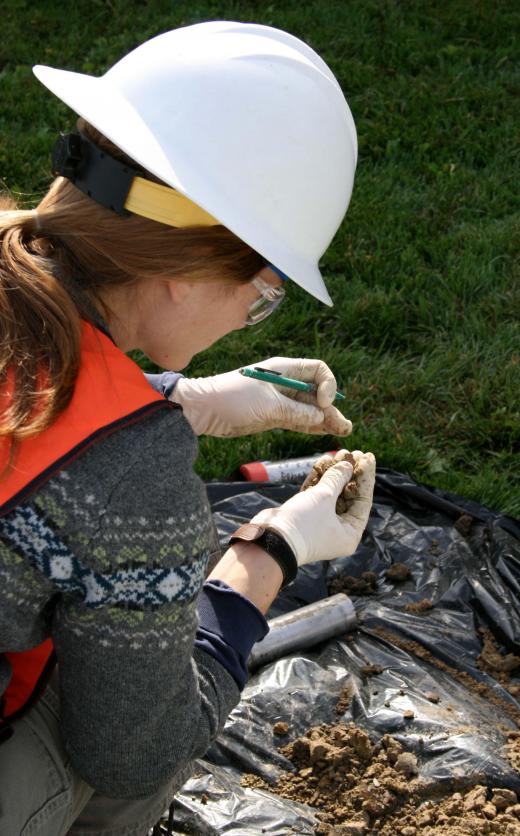What Is a Density Test?
 Mary McMahon
Mary McMahon
A density test is a type of materials test to determine the density of compacted soil, rock, or other materials, either in the field or in a lab setting. This is important for activities like building roadways, embankments, and berms, where a particular density is required for safety. Standards may be set by government agencies or through internal policies, and testing may need to take place before construction can proceed, and before facilities are opened to the public, to reduce the risk of safety problems.
There are a number of techniques available for density testing. One traditional method involves taking a core sample in a tube and weighing the sample to determine how much soil, sand, or other fine material fits in a given area with the current level of compaction. The materials can be weighed dry and wet to provide additional information about their density. Labs can also perform other materials tests, like an evaluation to determine what kinds of materials are present in the sample.

Field testing can involve the use of nuclear equipment to judge density in situ, along with other options for coarse rock, gravel, and other materials. The best method for a density test can depend on the setting and the entity performing the testing. Materials testing firms and government agencies usually have standards and procedures they follow to offer consistent and appropriate density testing. Using the same methods for the same settings can allow for the comparison of data, which may be important in analysis of materials and methods used in construction.

This aspect of geotechnical testing is usually necessary as part of site preparation for major projects like high rises and bridges, where soil quality can be a very important factor. If the density test does not meet building standards, engineers may need to compensate with measures like anchors into the bedrock to distribute the weight of the structure. Failure to address concerns about poor soil could lead to failure as a result of unstable soils that are not equipped to handle the weight of a laden structure.
Periodic density test procedures can also be used on construction sites like roadways and buildings to determine the level of soil and materials compaction. If there is a problem, it can be identified and addressed quickly, before the next step proceeds. This prevents the need for a costly rollback to fix a density problem in a lower layer of a project. Density test results may also be required by regulators who want assurances that a project meets all applicable safety standards.
AS FEATURED ON:
AS FEATURED ON:












Discuss this Article
Post your comments